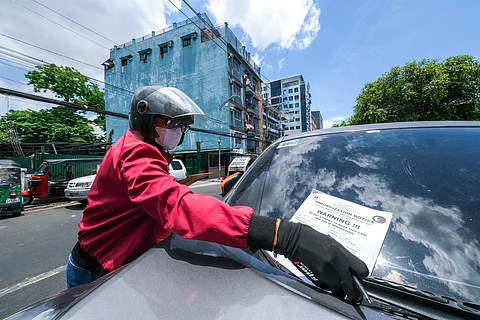
- NEWS
- the EDIT
- COMMENTARY
- BUSINESS
- LIFE
- SHOW
- ACTION
- GLOBAL GOALS
- SNAPS
- DYARYO TIRADA
- MORE

Parking remains a major issue in the Philippines, with vehicles frequently found double-parked or occupying sidewalks, creating significant challenges for both pedestrians and drivers navigating narrow streets.
The Metropolitan Manila Development Authority (MMDA) has established parking rules, taught in driving schools and followed by cities nationwide. These include prohibitions on parking within six meters of intersections and four meters of driveways, fire stations, hospitals and fire hydrants.
Regulating parking more effectively could also lead to improved urban mobility, making streets safer and more accessible for everyone.
By addressing these gaps in policy and improving oversight, cities in the Philippines could reduce parking-related issues that currently contribute to daily traffic woes.
Establishing clear and enforceable parking rules, as seen in global cities, would foster a more organized and disciplined approach to urban traffic management.
We could learn something from other countries.
In nations like South Korea, parking regulations are far more detailed, with assigned attendants and clear financial oversight by local governments.
Mayors there ensure parking fees go directly to the city, a system that could benefit the Philippines — if adopted here — where parking attendants are often appointed arbitrarily by barangays or individuals.
In Washington, D.C., for instance, leaving a car running while parked incurs a $50 fine. Parking in spaces reserved for persons with disabilities results in fines starting at $250. Violations for parking in alleyways or sidewalks are also penalized with $50 fines.
Similarly, in Paris, parking in alleyways is prohibited unless there’s enough space for other vehicles to pass. The city also limits parking in business districts to two consecutive hours, except on holidays, but this rule is sometimes confusing.
Implementing stricter laws, like those in Paris and Washington, could alleviate parking issues in the Philippines, particularly in congested areas where both pedestrians and drivers face regular inconvenience.
Meanwhile, even major cities like London can have vague parking policies. While most of the city operates as a parking zone with limited restrictions, specific rules apply to residential areas. Residents must pay four weeks in advance to secure parking, and illegally parked cars can be clamped.
Manila had a similar rule under Ordinance 8898, enacted in 2002, which authorized vehicle clamping. However, in July 2023, Mayor Honey Lacuna suspended the ordinance due to resident complaints about its implementation.
California’s parking laws show similarities to those in Quezon City. In both places, it’s illegal to repair vehicles on public streets unless there’s an emergency. However, Quezon City does not specify whether emergency repairs are allowed, a detail that should be clarified.
Quezon City also prohibits citizens from reserving parking spaces or conducting car repairs on residential roads. There are strict parking restrictions on major roads like Aurora Boulevard, P. Tuazon, Main Avenue, Liberty Avenue, 15th Avenue and EDSA.
Comparing Philippine parking regulations to those abroad highlights a lack of specificity and enforcement. While geographical and governmental differences play a role, compliance by drivers is equally important.
Adopting more detailed parking rules from countries like South Korea and France could help ease urban congestion. Stricter enforcement of parking regulations would benefit not just drivers but pedestrians and commuters alike.
In the long run, better parking management could lead to a more efficient and livable urban environment, reducing stress for residents and visitors alike.
And that’s what we all like to have.
